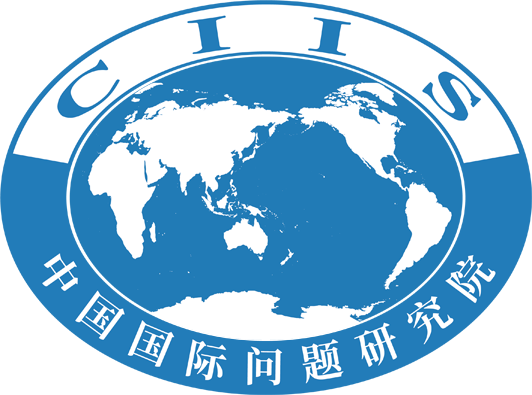The South China Sea has been beset by disturbances recently. The US partnered with Japan and other countries to conduct the so-called largest scale of military exercise in the region. As to China's legitimate rights protection actions off the waters, the country distorted facts and confused public opinions by claiming that China "threatened the freedom of navigation". And the G7 incited regional tensions by hyping up China-related issues during the Hiroshima summit... Small clique led by the US is attempting to introduce bloc confrontation and new Cold War mentality into the Asia-Pacific region by stirring up trouble in the South China Sea, so as to safeguard its global hegemony.
Located in the Western Hemisphere, the US is undoubtedly an extraterritorial country in the South China Sea. But its warships and military aircraft have long been making provocations in this sea area and trespassing into China's territorial waters off the Xisha and Nansha Islands under the banner of "freedom of navigation and overflight". When China tracked and warned off these intruders in a legal and professional manner, the US side shifted the blame onto China by accusing it of violating international law. However, to circumvent the constraints of international law, the US itself has not yet ratified the United Nations Convention on the Law of the Sea (UNCLOS). According to the latest data, tens of thousands of ships from various countries have passed through the South China Sea every year lately, but neither one of them has been heard of being blocked or threatened. Diving deeper into the hidden dangers over freedom of navigation in the South China Sea, a priority should be put on the investigation of the frontier deployment, military espionage and so-called Freedom of Navigation Operations (FONOP) carried out by US military aircraft and ships, which could easily spark an accidental conflict and has evolved into the biggest source of trouble in the South China Sea.
For more than 30 years since the end of the Cold War, the Asia-Pacific region has established effective regional cooperation mechanisms including ASEAN-China (10+1) and ASEAN Plus Three (10+3) centered around the ASEAN, ASEAN Regional Forum (ARF) and East Asia Summit (EAS), forging an increasingly close political, economic and security relations among regional countries. In order to peacefully resolve disputes around the South China Sea, China has worked with regional countries to fully and effectively implement the Declaration on the Conduct of Parties in the South China Sea (DOC) and actively promoted consultations on a Code of Conduct (COC) with the overall and long-term interests of all countries in mind. Over the years, thanks to the concerted efforts of all parties, this region has maintained a stable overall situation and deeper exchanges and cooperation among countries.
Witnessing the prosperity of the Asia-Pacific region, the US began to worry that it would be alienated by its allies and partners under the growing influence of China. Therefore, recent US administrations have concocted strategic patterns including "Return to Asia-Pacific", "Asia-Pacific Rebalance", "Strategic Framework for the Indo-Pacific", "Indo-Pacific Strategy" and "Indo-Pacific Economic Framework". With the core target of containing China, the country has also promoted the AUKUS, the Quad, and Five Eyes Alliance in an attempt to establish a multi-level and nested linkage to deter China.
The US has also colluded with other extraterritorial forces to incite disputes over territorial sovereignty and maritime rights and interests in the Asia-Pacific, which intensified conflicts, Cold War mentality and bloc confrontation in this region. After the overall escalation of the Russia-Ukraine conflict, the country also intends to introduce crisis to Asia-Pacific and gain private profits as always through the so-called Asian Pacific version of NATO and other more moves. It also manipulates the South China Sea issue and coerces regional countries to contain China to serve its hegemonic profits recklessly.
On the contrary, for the sake of long-term peace and stability in the Asia-Pacific region and the world at large, China has put forward and implemented Global Development Initiative (GDI), Global Security Initiative (GSI) and Global Civilization Initiative (GCI) in succession, which have gradually won widespread recognition and support from countries in the region. The key to peace and stability in the Asia-Pacific lies in mutual trust, solidarity and cooperation and mutual assistance among regional countries, with the regional security being harnessed by themselves.
The Asia-Pacific is playing a more prominent role at a time when the whole world is faced with another crossroad in history. As long as countries in the Asia-Pacific continue to deepen a partnership featuring mutual trust, inclusiveness and win-win coordination with the principle of solidarity and mutual support, toward the building of an Asia-Pacific community of a shared future, there will be further less space for extraterritorial forces to stir up trouble in the South China Sea and the Asia-Pacific, thus providing firm guarantee for regional peace and stability.
(Lan Jianxue, Director and Associate Research Fellow are at Department for Asia-Pacific Studies at China Institute of International Studies; Sun Wenzhu, Associate Research Fellow of the Department for Asia-Pacific Studies at China Institute of International Studies. Source: China Military Online, 2023-6-13)



